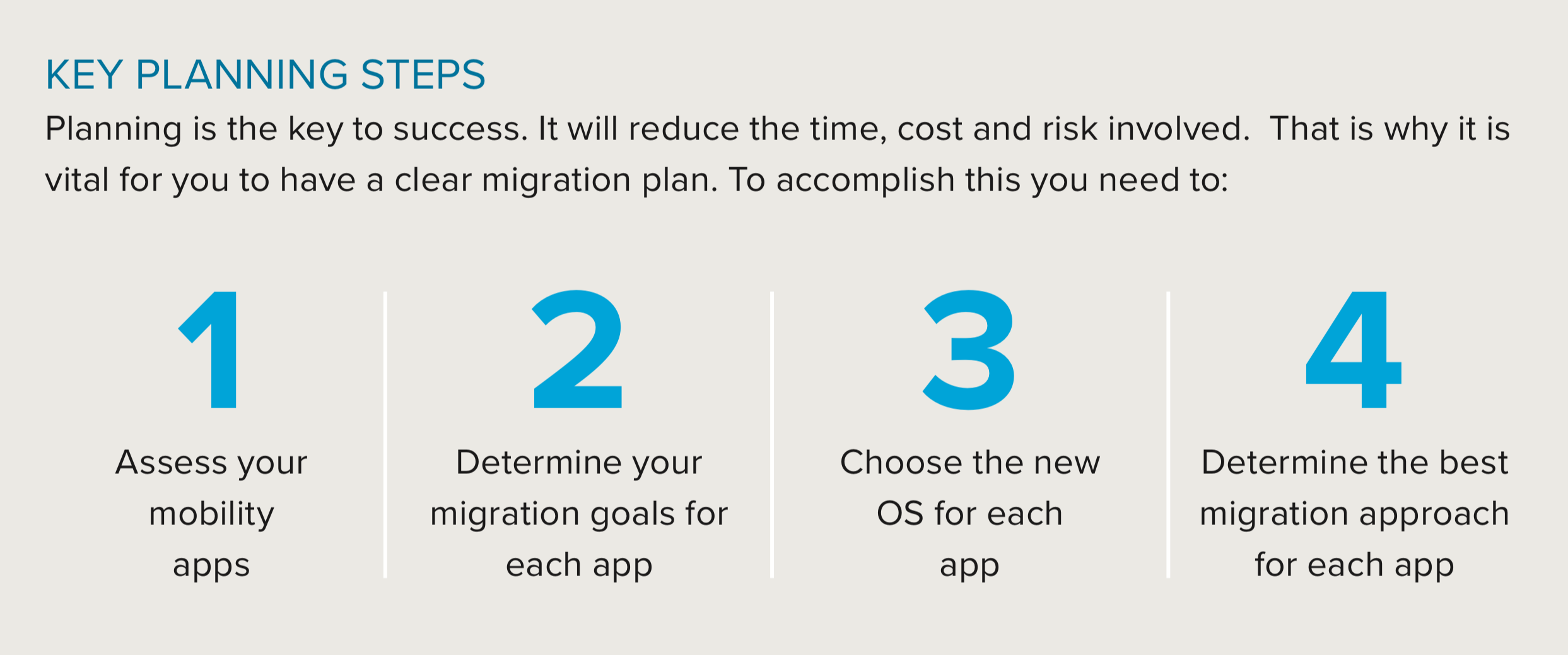4 Steps for Strategic Mobile Application Migration
The need to migrate applications that support key business functions has never been more important. There are three primary reasons why:
- Windows is ending support of its popular enterprise OS, making it relatively imperative that organizations using Windows 7 update to a supported OS like Apple or Android.
- Rugged devices are becoming as easy to operate as consumer-grade.
- New technologies like GPS, RFID sensors, and near-field communication are making application migration a necessity for competitive businesses.
While “change” is a word that leaves some people trembling, leading organizations take more of a “glass half full” approach. They look at the situation as an impetus for a wholescale system reevaluation and an opportunity to reimagine what mobile can do to improve efficiencies, increase productivity, and reduce costs.
As with most things that can make such an impact, app migration is something that takes planning, evaluation, and (in many cases) strong partnerships. This blog post will share a methodology for how to strategically migrate applications.
The path to application migration
Zebra’s whitepaper, “Successfully Migrate Mobile Apps to Transform your Organization,” highlights four basic steps to mobile app migration.
Step 1: Assess your mobility apps
It is easy to focus on your most used applications, but your company has more apps than you likely realize. It is important to look through every application and update it, especially as an outdated app poses as a security risk. To help determine what you truly have out there, go through your workflows and record all of the apps that support them.
Step 2: Determine your migration goals for each app
We get caught up in how we use applications, not what the apps are supposed to do for the company. Application migration should not be a one-to-one transfer to a new OS. Instead, before migrating, consider the goals you have for what the application should do for your company and for your employees. With new technologies available like the ability to access the camera to take pictures of returned goods that are damaged and GPS route optimization, a one-to-one migration completely misses opportunities for process improvement.
Step 3: Choose the new OS for each app
You have three options for OS providers: Windows 8 and 10, Android, and Apple. According to the Zebra whitepaper, “It’s probably unrealistic to think about standardizing an OS across an organization…With that in mind, it’s important to be open and capable of supporting a multi-OS environment. That means designing and optimizing your new apps to be OS agnostic.”
Step 4: Determine the best migration approach for each app
Each application is different. Whether you are migrating a TE, native, or web app will determine on how much code can be reused and how quickly the app can be back on its feet. New technologies and partners have made this process less costly and quicker than ever before.
One more thing to consider
One last bit of advice: remember that your hardware and software need to be able to work together to support your goals. By upgrading your iOS, you may render some of your hardware obsolete if you are not careful. For example, there are devices out there that will not support anything higher than Android 4.4. So, as you are formulating your long-term plan, it is important to evaluate whether you intend to purchase new devices or try to work with what you have – and to work with a partner that can help you make sure that your path forward takes all relevant variables into account.
Let us help
If you’re looking for a partner to guide you through your migration process, get in touch with The SMS Group. Our team can help you find the right systems, lead you through the process of purchase and installation, and make sure that your applications make the most of today’s technology. Contact us online to learn more or call 937-498-2700.



